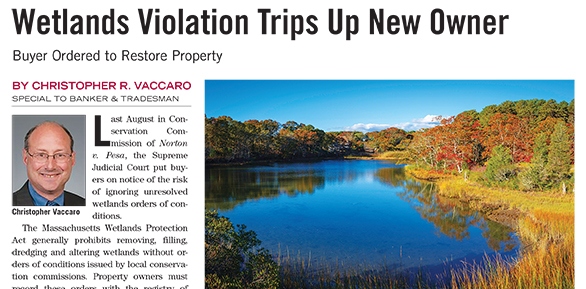 Published By
Published By
Christina Petrucci
Partner, Dalton & Finegold
Mechanic’s liens can be a complicated issue for homeowners in Massachusetts. A mechanic’s lien is a legal claim against a property that is filed by a contractor, subcontractor, or supplier who has provided labor or materials for a construction project and has not been paid. In this blog post, we’ll discuss what mechanic’s liens are, how they work in Massachusetts, and how to deal with them.
What is a Mechanic’s Lien?

A mechanic’s lien is a legal claim against a property that is filed by a contractor, subcontractor, or supplier who has provided labor or materials for a construction project and has not been paid. The lien gives the contractor or supplier a legal right to seek payment from the property owner, even if the property owner has already paid the general contractor.
How do Mechanic’s Liens Work in Massachusetts?
In Massachusetts, mechanic’s liens are governed by Chapter 254 of the Massachusetts General Laws. Under this law, any person who furnishes labor or materials for the improvement of real property has a right to file a mechanic’s lien if they are not paid. The lien must be filed within 90 days of the last day of work or the last delivery of materials.
Once the lien is filed, it must be served on the property owner, and the lienholder must file a lawsuit within 90 days to enforce the lien. If the lien is not enforced, it becomes invalid after one year from the date it was filed.
How to Deal with Mechanic’s Liens in Massachusetts?
If you are a homeowner who is facing a mechanic’s lien, there are a few things you can do to protect yourself. First, it’s important to determine if the lien is valid. Check to see if the contractor or supplier followed all the necessary legal requirements when filing the lien, and make sure that you were properly served with the lien.
If the lien is valid, you have several options for resolving the issue. You can negotiate a settlement with the lienholder, pay the lien in full, or challenge the lien in court. If you choose to challenge the lien, you should seek the advice of an experienced real estate attorney.
Mechanic’s liens can be a complicated issue for homeowners in Massachusetts. If you are facing a mechanic’s lien, it’s important to seek the advice of an experienced real estate attorney who can guide you through the process and help you protect your rights. For more information on Mechanic’s Liens or other liens affection real estate, contact one of our attorneys from our residential department. If you receive a notice or have been served with a mechanics lien contact our litigation department.



 Buyer Ordered to Restore Property
Buyer Ordered to Restore Property

